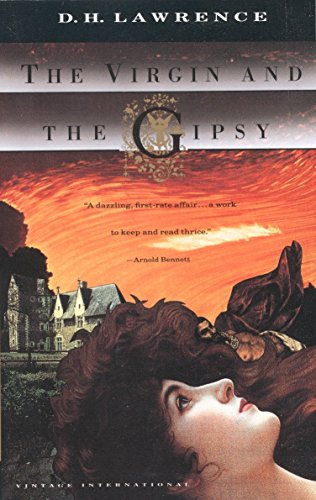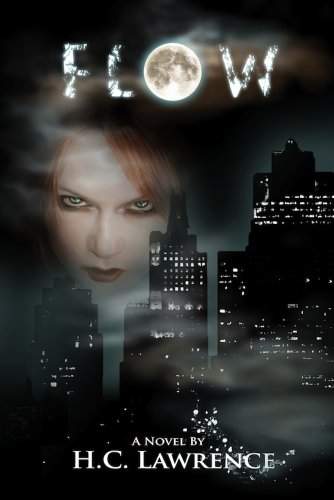D. H.. Lawrence
Women in Love
language
( June 29, 2018)
Women in Love (1920) is a novel by British author D. H. Lawrence. It is a sequel to his earlier novel The Rainbow (1915), and follows the continuing loves and lives of the Brangwen sisters, Gudrun and Ursula. Gudrun Brangwen, an artist, pursues a destructive relationship with Gerald Crich, an industrialist. Lawrence contrasts this pair with the love that develops between Ursula Brangwen and Rupert Birkin, an alienated intellectual who articulates many opinions associated with the author. The emotional relationships thus established are given further depth and tension by an intense psychological and physical attraction between Gerald and Rupert. The novel ranges over the whole of British society before the time of the First World War and eventually concludes in the snows of the Tyrolean Alps. Ursula's character draws on Lawrence's wife Frieda and Gudrun's on Katherine Mansfield, while Rupert Birkin's has elements of Lawrence himself, and Gerald Crich is partly based on Mansfield's husband, John Middleton Murry.[1]Ursula and Gudrun Brangwen are sisters living in The Midlands in England in the 1910s. Ursula is a schoolteacher, Gudrun a painter. They meet two men who live nearby, school inspector Rupert Birkin and Gerald Crich, heir to a coal-mine, and the four become friends. Ursula and Birkin begin a romantic friendship, while Gudrun and Gerald eventually begin a love affair.
All four are deeply concerned with questions of society, politics, and the relationship between men and women. At a party at Gerald's country house, Gerald's sister Diana drowns. Gudrun becomes the teacher and mentor of Gerald's youngest sister. Soon, Gerald's coal-mine-owning father dies as well, after a long illness. After the funeral, Gerald goes to Gudrun's house and spends the night with her while her parents sleep in another room.
Birkin asks Ursula to marry him, and she agrees. Gerald and Gudrun's relationship, however, becomes stormy.
The two couples take a holiday together in the Alps. Gudrun begins an intense friendship with Loerke, a physically puny but emotionally commanding artist from Dresden. Gerald, enraged by Loerke and most of all by Gudrun's verbal abuse and rejection of his manhood, and driven by his own internal violence, tries to strangle Gudrun. Before he has killed her, however, he realises that this is not what he wants, and he leaves Gudrun and Loerke, and climbs the mountain, eventually slipping into a snowy valley where he falls asleep and freezes to death.
The impact of Gerald's death upon Birkin is profound. The novel ends a few weeks after Gerald's death, with Birkin trying to explain to Ursula that he needs Gerald as he needs her; her for the perfect relationship with a woman, and Gerald for the perfect relationship with a man.After years of misunderstandings, accusations of duplicity, and hurried letters, Thomas Seltzer finally published the first edition of Women in Love in New York City, on 9 November 1920. This had come after three drawn out years of delays and revisions.[2] This first limited edition (1,250 books) was available only to subscribers, due to the controversy caused by Lawrence's previous work, The Rainbow (1915).
Originally, the two books were written as parts of a single novel, but the publisher had decided to publish them separately and in rapid succession. The first book's treatment of sexuality was frank for the mores of the time, and after an obscenity trial was banned in the UK for 11 years, although it was available in the US. The publisher then backed out of publishing the second book in the UK, so Women in Love first appeared in the US. Martin Secker published the first trade edition of Women in Love in London, on 10 June 1921.As with most of Lawrence's works, Women in Love's sexual subject matter caused controversy. For example, W. Charles Pilley, an early reviewer wrote of it in John Bull, "I do not claim to be a literary critic, but I know dirt when I smell it.
All four are deeply concerned with questions of society, politics, and the relationship between men and women. At a party at Gerald's country house, Gerald's sister Diana drowns. Gudrun becomes the teacher and mentor of Gerald's youngest sister. Soon, Gerald's coal-mine-owning father dies as well, after a long illness. After the funeral, Gerald goes to Gudrun's house and spends the night with her while her parents sleep in another room.
Birkin asks Ursula to marry him, and she agrees. Gerald and Gudrun's relationship, however, becomes stormy.
The two couples take a holiday together in the Alps. Gudrun begins an intense friendship with Loerke, a physically puny but emotionally commanding artist from Dresden. Gerald, enraged by Loerke and most of all by Gudrun's verbal abuse and rejection of his manhood, and driven by his own internal violence, tries to strangle Gudrun. Before he has killed her, however, he realises that this is not what he wants, and he leaves Gudrun and Loerke, and climbs the mountain, eventually slipping into a snowy valley where he falls asleep and freezes to death.
The impact of Gerald's death upon Birkin is profound. The novel ends a few weeks after Gerald's death, with Birkin trying to explain to Ursula that he needs Gerald as he needs her; her for the perfect relationship with a woman, and Gerald for the perfect relationship with a man.After years of misunderstandings, accusations of duplicity, and hurried letters, Thomas Seltzer finally published the first edition of Women in Love in New York City, on 9 November 1920. This had come after three drawn out years of delays and revisions.[2] This first limited edition (1,250 books) was available only to subscribers, due to the controversy caused by Lawrence's previous work, The Rainbow (1915).
Originally, the two books were written as parts of a single novel, but the publisher had decided to publish them separately and in rapid succession. The first book's treatment of sexuality was frank for the mores of the time, and after an obscenity trial was banned in the UK for 11 years, although it was available in the US. The publisher then backed out of publishing the second book in the UK, so Women in Love first appeared in the US. Martin Secker published the first trade edition of Women in Love in London, on 10 June 1921.As with most of Lawrence's works, Women in Love's sexual subject matter caused controversy. For example, W. Charles Pilley, an early reviewer wrote of it in John Bull, "I do not claim to be a literary critic, but I know dirt when I smell it.
Enjoy reading Women in Love? You may also like these books
-

D. H. Lawrence
Fantasia of the Unconscious / Psychoanalysis and the Unconscious
Paperback (Penguin Books ) -

D.H. Lawrence
Sons and Lovers, Women in Love, Love Among the Haystacks, and Lady Chatterly's Lover
Hardcover (Octopus/Heinemann June 1, 1983) -

D. H. Lawrence
Love among the Haystacks - With Audio Level 2 Oxford Bookworms Library
eBook (Oxford University Press Sept. 30, 2014) -

D. H Lawrence
Sons and Lovers / The Fox / Love Among the Haystacks / Aaron's Rod / The Ladybird / Women in Love
Hardcover (Octopus/Heinemann March 15, 1979) -
Z

D.H Lawrence
Oxford Bookworms Library: Love Among the Haystacks: Level 2: 700-Word Vocabulary
Paperback (Oxford University Press March 15, 2008) -

D. H. Lawrence
The Rainbow The Rainbow Series
Paperback (CreateSpace Independent Publishing Platform ) -

D H Lawrence
Masters Library D. H. Lawrence Sons and Lovers, Women In Love, Love Among the Haystacks and Lady Chatterley's Lover
Hardcover (Amaranth Press Jan. 1, 1960)













